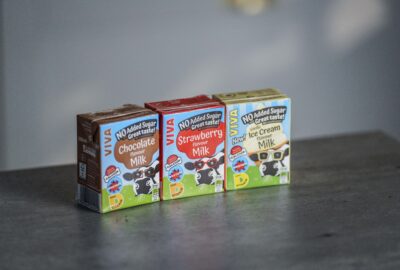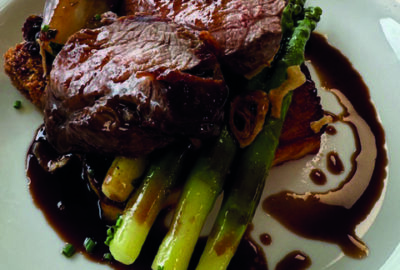Good nutrition is an essential component of a child’s development. Scientific research has proven that a good diet helps children behave better in the classroom and improves attainment. In addition, if good eating habits are established in the early years, they are generally carried through into adult life. Education caterers bear a huge responsibility and need to be creative in offering appealing and nutritious meals – on a very tight budget.
School lunches remain in the spotlight with the ongoing success of the School Food Plan and Universal Infant Free School Meals, and the challenge from September is how to encourage children moving into Year 3 (and therefore no longer eligible for UIFSM) to continue taking – and paying for – a school meal. Colleges and universities, meanwhile, face stiff competition from the High Street and need to adapt current food trends and market their offering in order to compete.
An inspector calls
From this month, Ofsted inspectors will be looking for evidence of “a culture of healthy eating” during school visits and will be required to visit the canteen and view the food on offer.
They will also consider the revised food standards which came into force at the beginning of this year and are mandatory for local authority schools, new free schools and schools that convert to academy status.
The School Food Plan has produced practical guidance to help schools adopt a whole school approach to food and create a culture and ethos of healthy eating, which is available on their website.
In addition, over 100 new recipes have been launched on the School Food Plan’s What Works Well website this month that meet the school food standards and support the government buying standards.
Academies and free schools founded between September 2010 and June 2014 are not legally required to adhere to the new food-based standards but are being encouraged to sign up to them at www.schoolfoodplan.com/school-food-standards/. Over 1,100 have done so already.
National School Meals Week
National School Meals Week (NSMW) is the one week a year where the school meals industry celebrates all that is great about school food.
Organised by LACA, the Lead Association for Catering in Education, for the last 21 years for school caterers in England and Wales, this year it takes place from November 2 to 6.
For those who want to run theme days before or during NSMW there are lots of free resources to download. For more details and inspiration visit www.thegreatschoollunch.co.uk.
Ringing the changes
Small changes can make a big difference to the diets of children and many food manufacturers offer schools-compliant ranges.
Mark Lyddy, Tilda’s head of foodservice, says: “Producing nutritious food, however, is one thing but if it doesn’t appeal to children once it’s dished up, it’s a wasted effort. Something we’ve found with Tilda Brown ‘n’ White is that the combination of white and brown grains has helped overcome the traditional resistance to brown rice. The visual appearance of the end dish as well as the texture of the rice is proving much more popular with children, which means all that goodness ends up inside the children, rather than left on the plate.”
Mohammed Essa, Aviko general manager UK and Ireland, says: “The challenge of school food guidelines means that schools need healthier options at all times of day, that not only appeal to pupils and taste great, but that also remain within ever tightening budgets.
“For universities, the challenge comes from keeping students on site and away from the high street when it comes to dining. Potatoes offer education caterers real value for money and their popularity shows no signs of flagging. The humble potato is bursting with vitamins B1, B6, B12 and C, while sweet potatoes are full of beta carotene (a vitamin A pre-cursor) and are packed with potassium. Rather than being avoided, carbohydrates should make up a third of pupils’ meals, so they can get the essential nutrients they need.
“The beauty of spuds when it comes to children’s diets is that – unlike other vegetables – children are happy to eat potatoes making them an easy way for caterers to ensure pupils are getting essential nutrients.”
Around the world
Exposure to foreign cuisines means that caterers have more scope to offer different foods and Asian, Mexican and Italian are huge favourites amongst young people.
Simon Cliff, general sales manager – foodservice, Daloon Foods, explains: “With Oriental and Indian cuisines still by far the most popular ethnic food choices here in the UK and with the continued expansion of Mexican, students’ interest in these cuisines, combined with the rising popularity of casual dining, creates the perfect opportunity for university and college caterers to offer really tasty and interesting menu options.”
Daloon are already supplying the education sector with many of its top selling products and recently launched a new range of Mini Snack Selection Packs that fit the bill perfectly.
Italian cuisine continues to be popular, offering a choice trusted by parents, that’s favourable with children and flexible for school meal operators.
In a 2014 summary report, compiled by Bookatable, the most popular cuisine type out of home was Italian, taking a 31% share of the 10 most in demand cuisines in the UK so school meal providers can take comfort that this menu choice will also be popular among its young diners when in school.
Italian food, full fl avoured, relatively low in cost to produce and simple to prepare has always been a favourite with school children and is a reliable option on the school dinner menu. For the school caterer it can be quick and easy to prepare, cost effective and a nutritional addition to the lunch offering.
Richard Jansen, MD of Pan’Artisan, adds: “We have created two pizza bases especially for schools; our ‘Deep Pan White’ and our ‘Deep Pan Brown with 25% Wholemeal’ are extremely popular and encourage children to eat healthily too.”
As well as its range of un-topped pizza bases, which allows for complete creativity, Pan’Artisan has a range of pre-topped pizzas, saving the caterer valuable time


